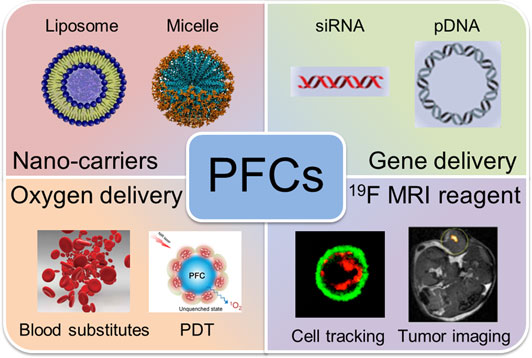Crossref Citations
This article has been cited by the following publications. This list is generated based on data provided by
Crossref.
Zhang, Tingbin
Huang, Yuanyu
Ma, Xiaowei
Gong, Ningqiang
Liu, Xiaoli
Liu, Lu
Ye, Xiaoxia
Hu, Bo
Li, Chunhui
Tian, Jian-Hua
Magrini, Andrea
Zhang, Jinchao
Guo, Weisheng
Xing, Jin-Feng
Bottini, Massimo
and
Liang, Xing-Jie
2018.
Fluorinated Oligoethylenimine Nanoassemblies for Efficient siRNA-Mediated Gene Silencing in Serum-Containing Media by Effective Endosomal Escape.
Nano Letters,
Vol. 18,
Issue. 10,
p.
6301.
Zhang, Weiwei
Zhao, Xiaoxiong
Yuan, Yuan
Miao, Fenglin
Li, Wengang
Ji, Shaoxia
Huang, Xing
Chen, Xinhua
Jiang, Tianan
Weitz, David A.
and
Song, Yujun
2020.
Microfluidic Synthesis of Multimode Au@CoFeB-Rg3 Nanomedicines and Their Cytotoxicity and Anti-Tumor Effects.
Chemistry of Materials,
Vol. 32,
Issue. 12,
p.
5044.
Syed, Usman Taqui
Dias, Ana M.A.
Crespo, Joao
Brazinha, Carla
and
de Sousa, Hermínio C.
2021.
Studies on the formation and stability of perfluorodecalin nanoemulsions by ultrasound emulsification using novel surfactant systems.
Colloids and Surfaces A: Physicochemical and Engineering Aspects,
Vol. 616,
Issue. ,
p.
126315.
Stefanek, Agata
Łęczycka-Wilk, Katarzyna
Czarnocka-Śniadała, Sylwia
Frąckowiak, Wojciech
Graffstein, Joanna
Ryżko, Agata
Nowak, Aleksandra
and
Ciach, Tomasz
2021.
Fluorosurfactants for medical nanoemulsions, their surface-active and biological properties.
Colloids and Surfaces B: Biointerfaces,
Vol. 200,
Issue. ,
p.
111603.
Lv, Jia
and
Cheng, Yiyun
2021.
Fluoropolymers in biomedical applications: state-of-the-art and future perspectives.
Chemical Society Reviews,
Vol. 50,
Issue. 9,
p.
5435.
Miłek, Tomasz
Grzeczkowicz, Anna
Lipko, Agata
Oleksinski, Leszek
Kwiatkowska, Angelika
Strawski, Marcin
Drabik, Monika
Stachowiak, Radosław
Goliszewski, Jerzy
and
Granicka, Ludomira H.
2022.
A Functionalized Membrane Layer as Part of a Dressing to Aid Wound Healing.
Membranes,
Vol. 12,
Issue. 10,
p.
936.
Zhang, Sidi
Li, Zhenhua
Wang, Qingbing
Liu, Qian
Yuan, Wei
Feng, Wei
and
Li, Fuyou
2022.
An NIR‐II Photothermally Triggered “Oxygen Bomb” for Hypoxic Tumor Programmed Cascade Therapy.
Advanced Materials,
Vol. 34,
Issue. 29,
Oksengendler, B. L.
Zatsepin, A. F.
Ashirmetov, A. Kh.
Turaeva, N. N.
Suleimanov, S. Kh.
Nikiforova, N. N.
and
Ashurov, Kh. B.
2022.
On the Concept of “Complexity” in Radiation Physics.
Journal of Surface Investigation: X-ray, Synchrotron and Neutron Techniques,
Vol. 16,
Issue. 3,
p.
364.
Wang, Ruonan
Xiao, Panpan
Yu, Bo
Sun, Ying
Li, Jia
Zhang, Ling’e
Jiang, Xiqun
and
Wu, Wei
2022.
Fluorination Effects on the Drug Delivery Property of Cylindrical Polymer Brushes.
ACS Applied Bio Materials,
Vol. 5,
Issue. 12,
p.
5924.
Joseph, Joice Maria
Gigliobianco, Maria Rosa
Firouzabadi, Bita Mahdavi
Censi, Roberta
and
Di Martino, Piera
2022.
Nanotechnology as a Versatile Tool for 19F-MRI Agent’s Formulation: A Glimpse into the Use of Perfluorinated and Fluorinated Compounds in Nanoparticles.
Pharmaceutics,
Vol. 14,
Issue. 2,
p.
382.
Wan, Yu
Yang, Yuhan
Wu, Mingyu
and
Feng, Shun
2022.
Fluorinated vectors for gene delivery.
Expert Opinion on Drug Delivery,
Vol. 19,
Issue. 11,
p.
1435.
Aikawa, K.
and
Okazoe, T.
2022.
Perfluoroalkyl Substances.
p.
477.
Yamaguchi, H.
2022.
Perfluoroalkyl Substances.
p.
440.
Moradi Kashkooli, Farshad
Jakhmola, Anshuman
Hornsby, Tyler K.
Tavakkoli, Jahangir (Jahan)
and
Kolios, Michael C.
2023.
Ultrasound-mediated nano drug delivery for treating cancer: Fundamental physics to future directions.
Journal of Controlled Release,
Vol. 355,
Issue. ,
p.
552.
Wan, Yu
Yang, Yuhan
Lai, Qiuyue
Wang, Wangxia
Wu, Mingyu
and
Feng, Shun
2023.
Fluorinated Cell-Penetrating Peptide for Co-Delivering siHIF-1α and Sorafenib to Enhance In Vitro Anti-Tumor Efficacy.
Pharmaceutics,
Vol. 15,
Issue. 12,
p.
2789.
Sharath, P.C.
Mahale, Rayappa Shrinivas
Vasanth, Shamanth
Krishna, Hemanth
Shashanka, R.
Vasantha Kumar, S.N.
and
Rathod, Babarao Sitaram
2023.
Advanced Fluoropolymer Nanocomposites.
p.
755.
Takatsu, Masako
Morihiro, Kunihiko
Watanabe, Honoka
Yuki, Mizue
Hattori, Takara
Noi, Kentaro
Aikawa, Kohsuke
Noguchi, Keiichi
Yohda, Masafumi
Okazoe, Takashi
and
Okamoto, Akimitsu
2023.
Cellular Penetration and Intracellular Dynamics of Perfluorocarbon-Conjugated DNA/RNA as a Potential Means of Conditional Nucleic Acid Delivery.
ACS Chemical Biology,
Vol. 18,
Issue. 12,
p.
2590.
Shi, Zhen
Yang, Yuhan
Guo, Ziyang
Feng, Shun
and
Wan, Yu
2023.
A cathepsin B/GSH dual-responsive fluorinated peptide for effective siRNA delivery to cancer cells.
Bioorganic Chemistry,
Vol. 135,
Issue. ,
p.
106485.
Yadav, Virendra Kumar
Choudhary, Nisha
Gacem, Amel
Verma, Rakesh Kumar
Abul Hasan, Mohd
Tarique Imam, Mohammad
Almalki, Ziyad Saeed
Yadav, Krishna Kumar
Park, Hyun-Kyung
Ghosh, Tathagata
Kumar, Pankaj
Patel, Ashish
Kalasariya, Haresh
Jeon, Byong-Hun
and
Ali AlMubarak, Hassan
2023.
Deeper insight into ferroptosis: association with Alzheimer’s, Parkinson’s disease, and brain tumors and their possible treatment by nanomaterials induced ferroptosis.
Redox Report,
Vol. 28,
Issue. 1,
Shen, Jing
Chen, Guobo
Zhao, Linghao
Huang, Guoyang
Liu, Hui
Liu, Baolin
Miao, Yuqing
and
Li, Yuhao
2023.
Recent Advances in Nanoplatform Construction Strategy for Alleviating Tumor Hypoxia.
Advanced Healthcare Materials,
Vol. 12,
Issue. 21,






